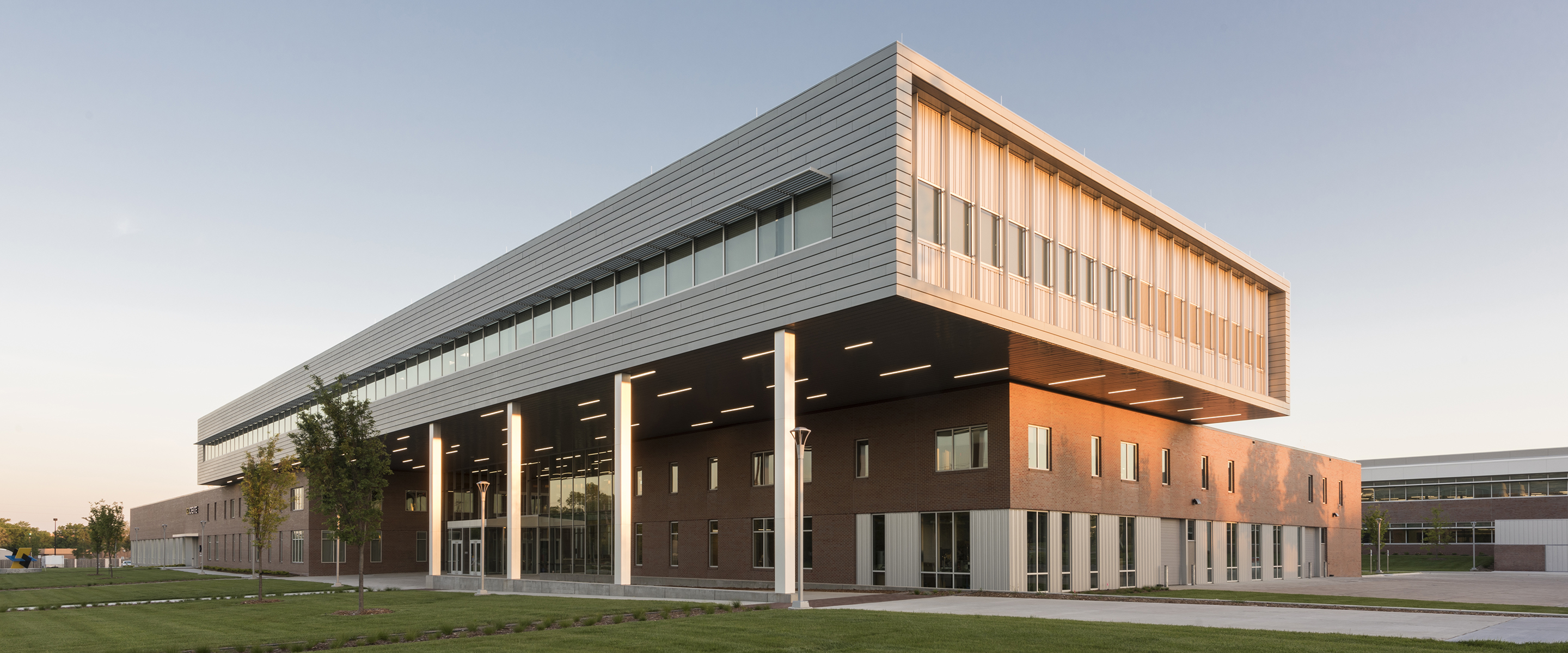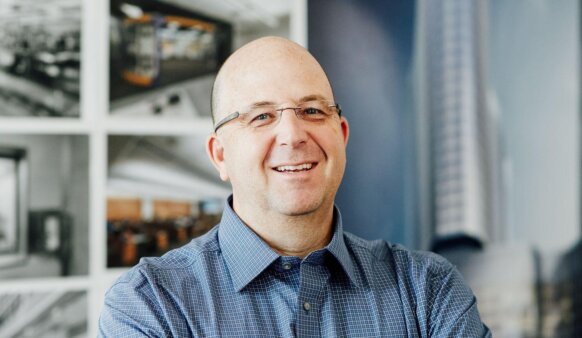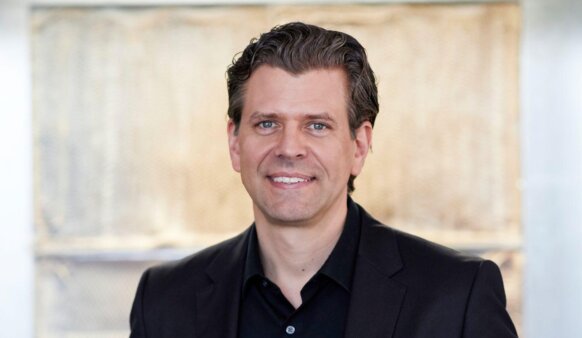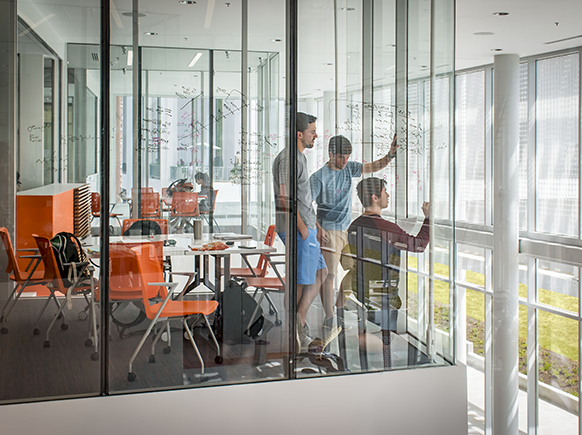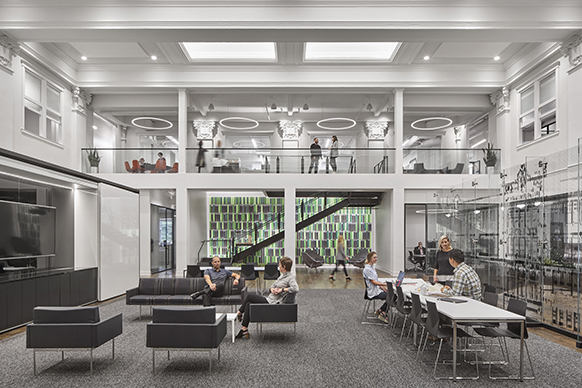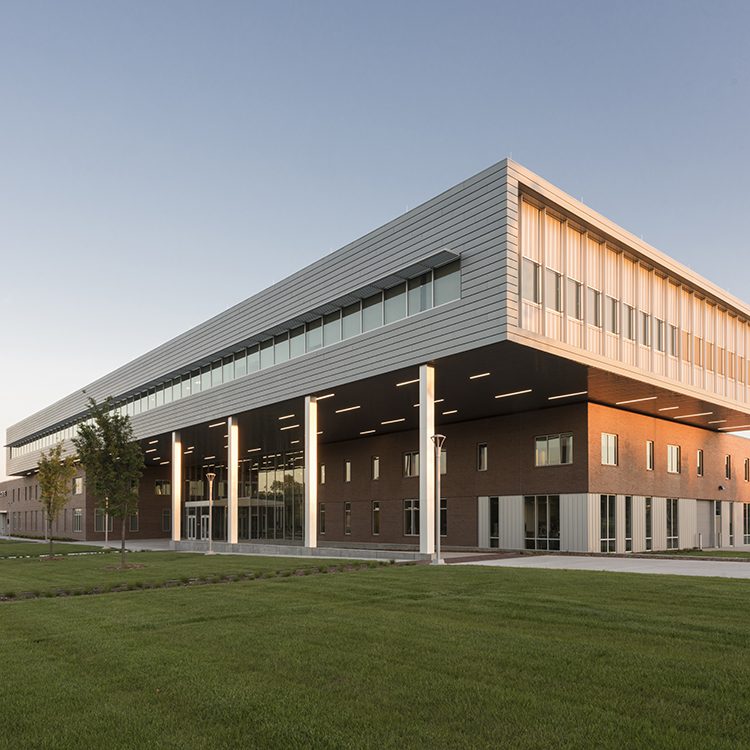
Wichita State University Experiential Engineering Building
WSU President John Bardo likes to dream big. He envisions a “university where innovation, creativity, entrepreneurship and technology are making the future.” This bold vision set an impressive challenge for our team to design the first of four buildings to be developed on WSU’s Innovation Campus – the Experiential Engineering Building (EEB).
The EEB needs to meet the learning objectives of not only students, but also the research goals of faculty, the innovation targets of private businesses, and the operational needs of public organizations. We systematically designed the building to advance these diverse requirements by creating a network of highly collaborative spaces. This was no easy feat. The types of programs held in the EEB extend from aerospace prototyping to metallurgy testing; from flight simulation to metrology measurement; and from astronautic mission planning to biomedical discovery.
These hubs encourage people in different programs – and even adventurous non-engineers – to work together. The building provides them with the tools and infrastructure to develop their skills and unshackle their imagination.
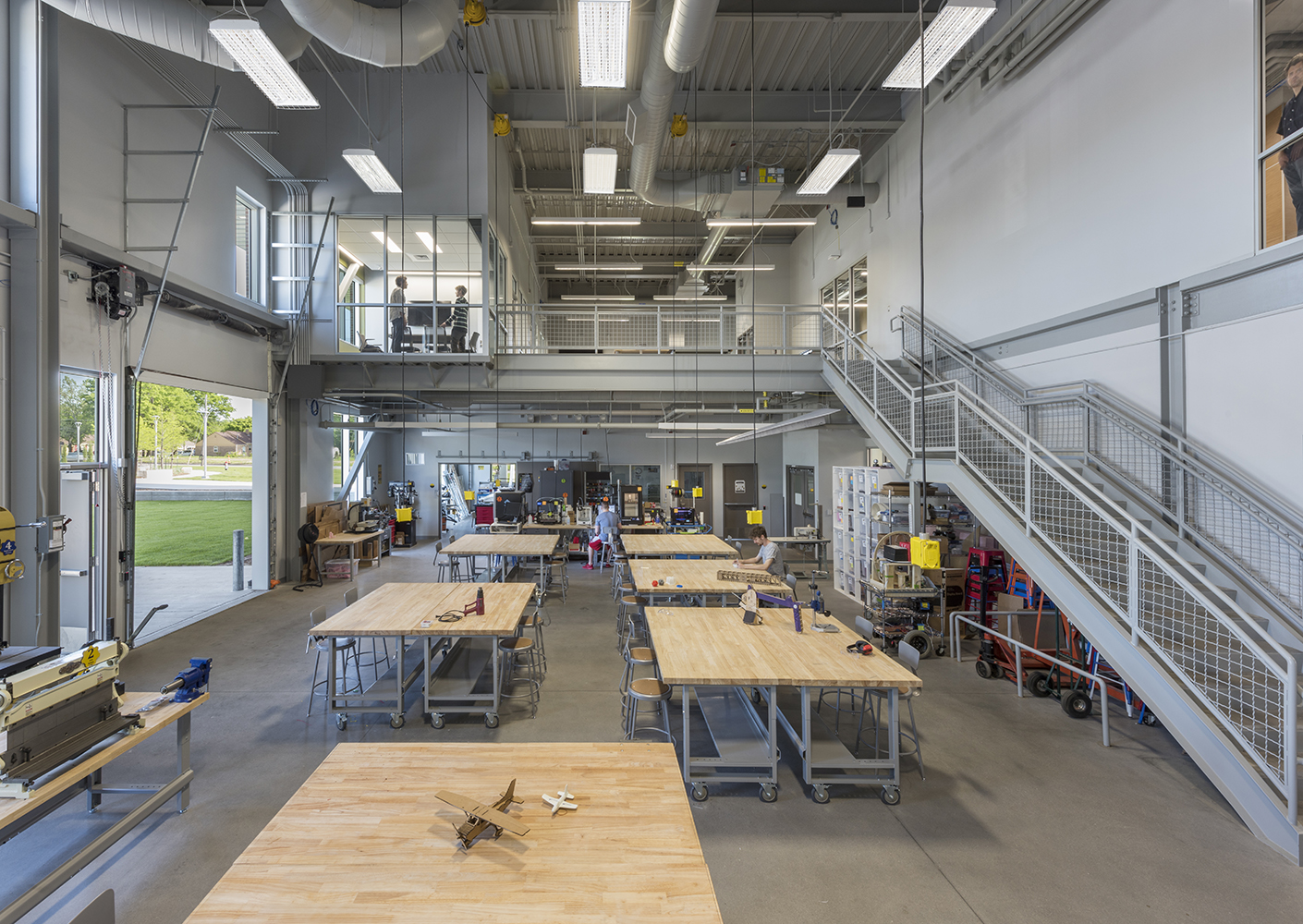
The WSU College of Engineering instructs engineering classes within the Experiential Engineering facility enabling curriculum to be delivered and practiced by students in a contextualized learning environment.
WSU desired to practice water reduction techniques that also double as teaching and research opportunities. Our design team used standard low-use fixtures throughout the building, as well as low-use landscape design. These combined strategies alone result in an overall water-use reduction of 37% and water-user reduction of 50%.

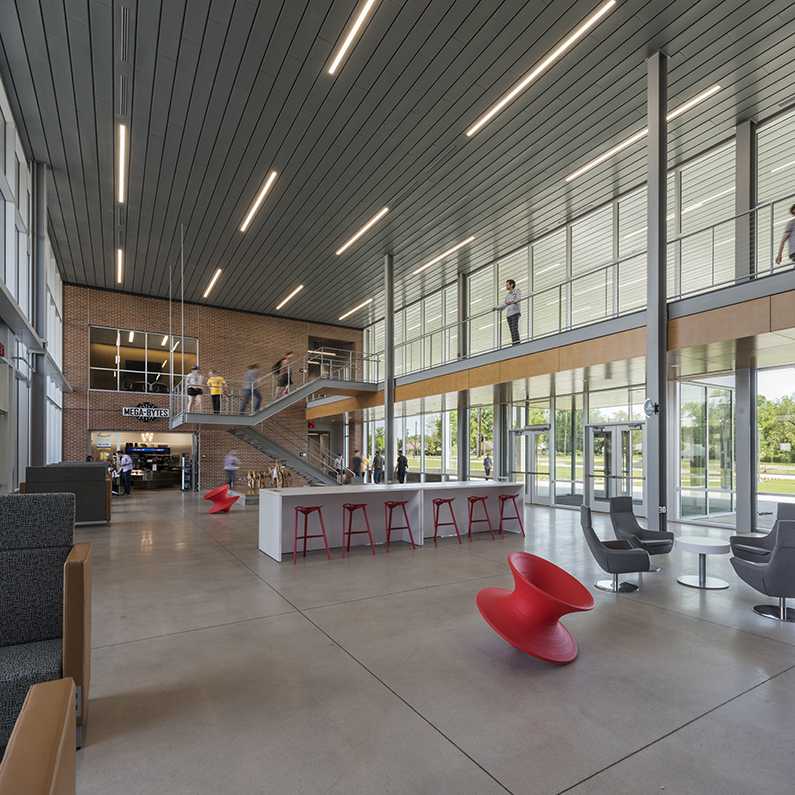

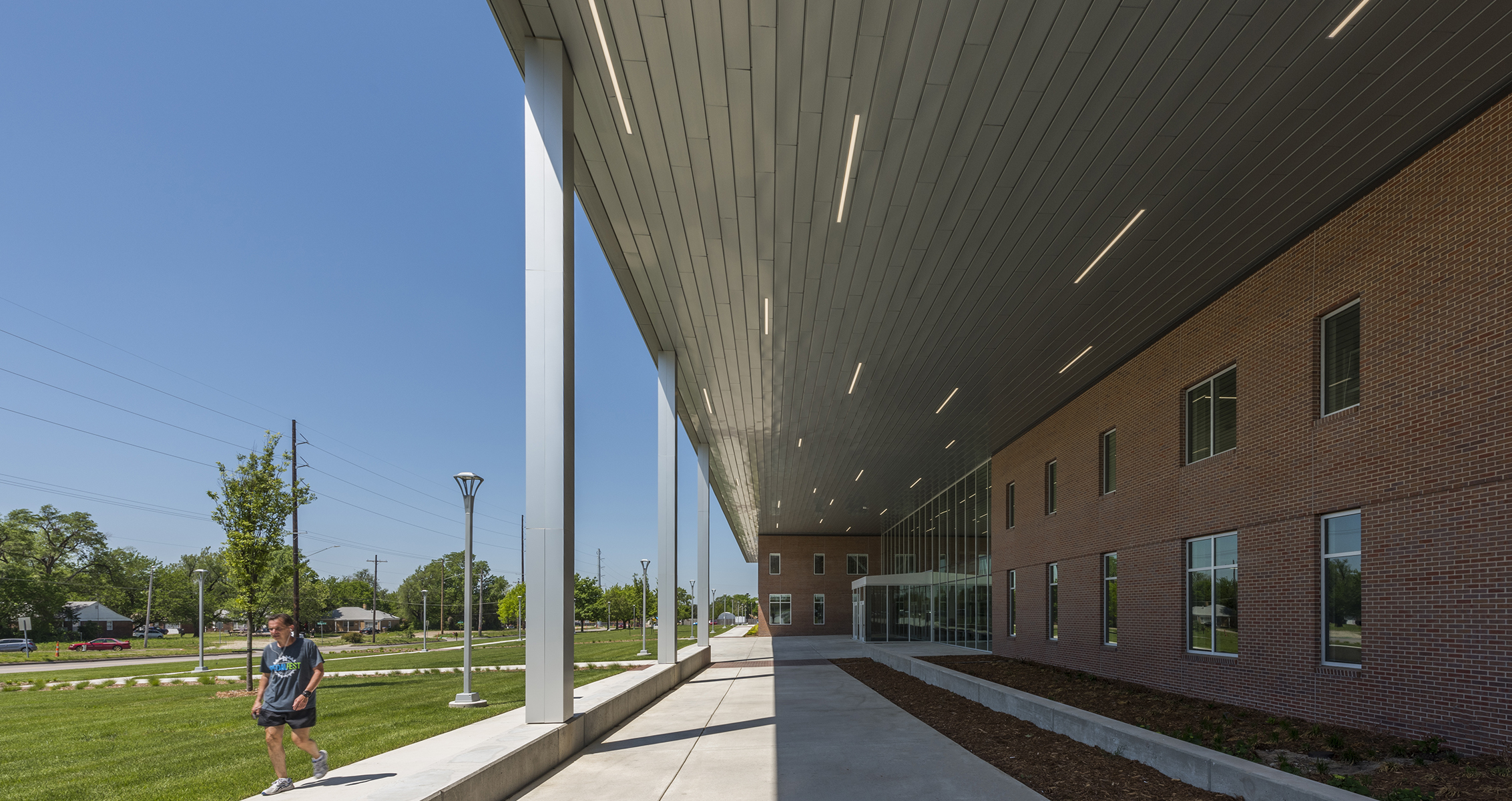
Overhangs and shade structures keep out the hot summer sun and allow passive warming from the winter sun. We also used east-west alignment of major building masses to reduce morning and afternoon glare. Together, these strategies reduce energy-use by 18%.
